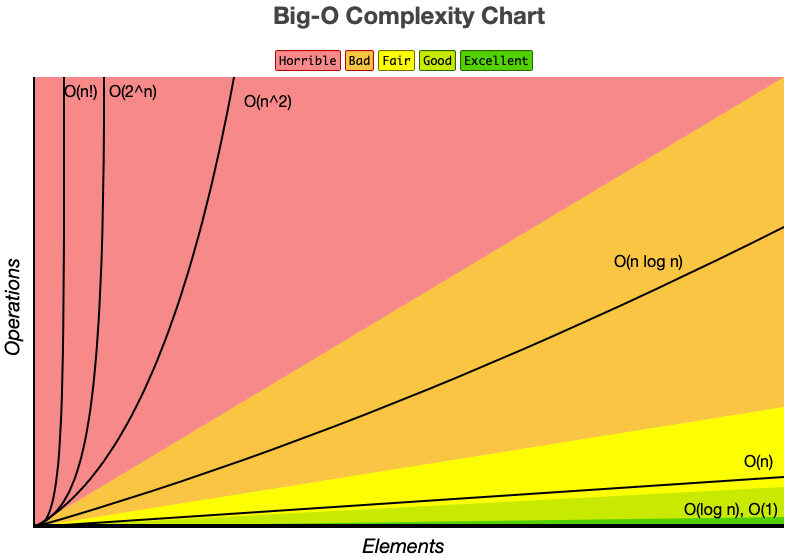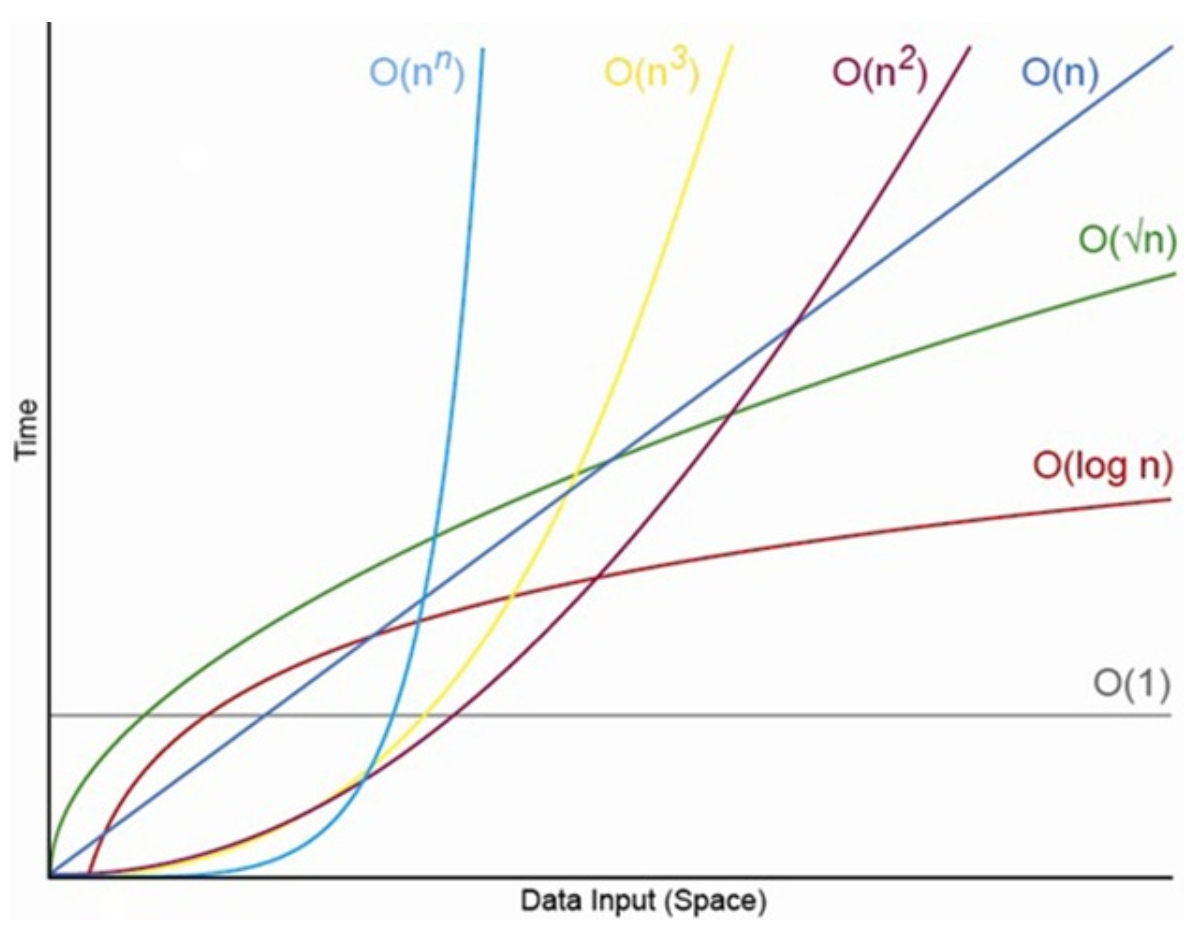Big O Notation
The Big O notation indicates how fast an algorithms is. It is the worst case evaluation of the given algorithms. In short, how many iterations are needed in the worst case. A list of algorithms with theirs Big O notation can be found at https://big-o.io.
O(n)
^ ^
| +-- Number of operations
+---- Big O
Some common runtimes
- \(O(log\;n)\) - also known as log time
- \(O(n)\) also known as linear time
- Simple search
- \(O(n*log\;n)\) - fast sorting algorithms
- quicksort
- \(O(n^2)\) - slow sorting algorihtms
- selection sort
- \(O(n!)\) - very slow algorithms
- traveling salesperson


Ranking Worst to Best
- \(O(n!)\)
- \(O(2^n)\)
- \(O(n^2)\)
- \(O(n*(log\;n)^2)\)
- \(O(n*log\;n)\)
- \(O(n)\)
- \(O(k)\)
- \(O(n + k)\)
- \(O(nk)\)
- \(O(log\;n)\)
- \(O(1)\)